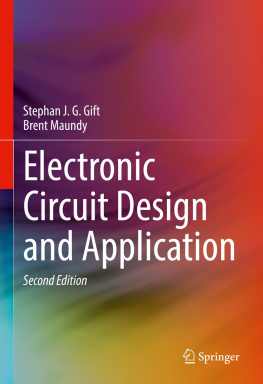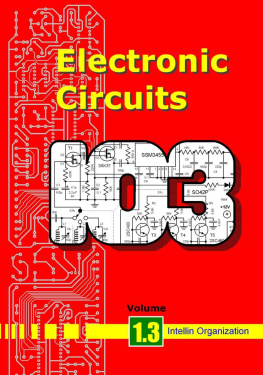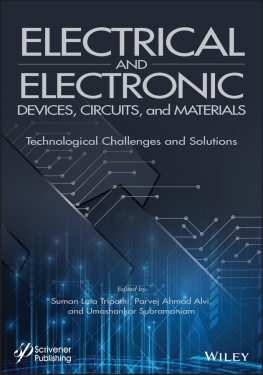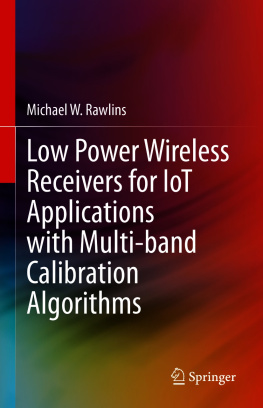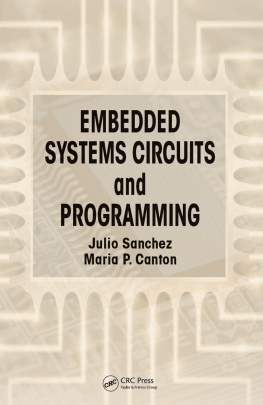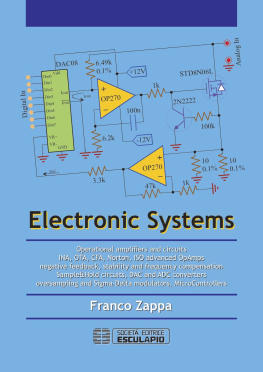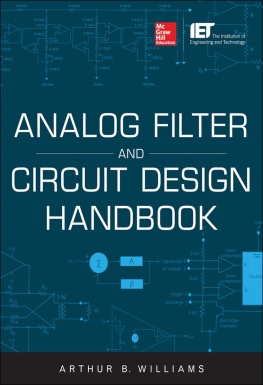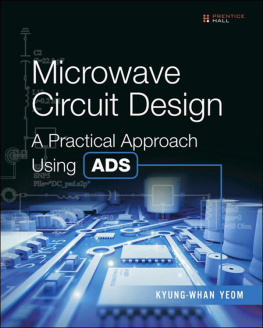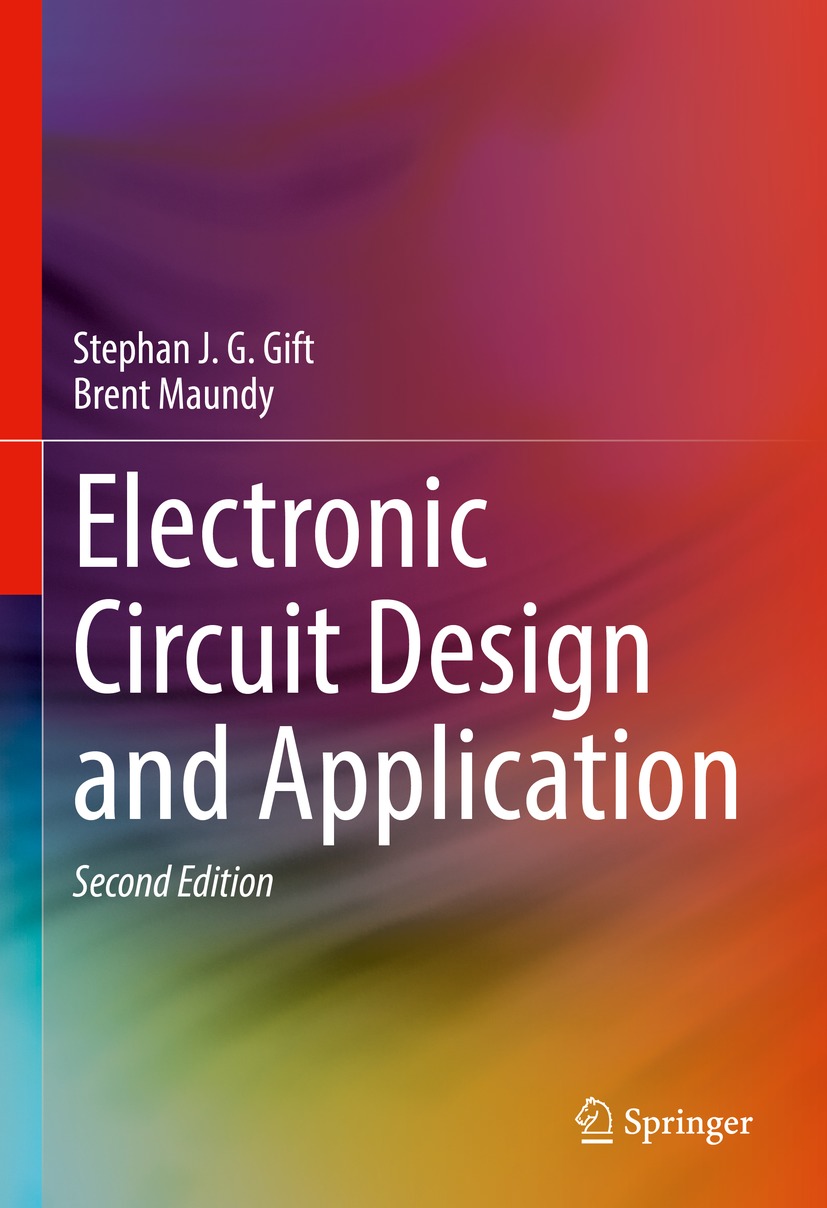Stephan J. G. Gift
Electrical and Computer Engineering, The University of the West Indies, St. Augustine Campus, St. Augustine, Trinidad and Tobago
Brent Maundy
Electrical and Computer Engineering, University of Calgary, Calgary, AB, Canada
ISBN 978-3-030-79374-6 e-ISBN 978-3-030-79375-3
https://doi.org/10.1007/978-3-030-79375-3
The Editor(s) (if applicable) and The Author(s), under exclusive license to Springer Nature Switzerland AG 2022
This work is subject to copyright. All rights are solely and exclusively licensed by the Publisher, whether the whole or part of the material is concerned, specifically the rights of translation, reprinting, reuse of illustrations, recitation, broadcasting, reproduction on microfilms or in any other physical way, and transmission or information storage and retrieval, electronic adaptation, computer software, or by similar or dissimilar methodology now known or hereafter developed.
The use of general descriptive names, registered names, trademarks, service marks, etc. in this publication does not imply, even in the absence of a specific statement, that such names are exempt from the relevant protective laws and regulations and therefore free for general use.
The publisher, the authors and the editors are safe to assume that the advice and information in this book are believed to be true and accurate at the date of publication. Neither the publisher nor the authors or the editors give a warranty, expressed or implied, with respect to the material contained herein or for any errors or omissions that may have been made. The publisher remains neutral with regard to jurisdictional claims in published maps and institutional affiliations.
This Springer imprint is published by the registered company Springer Nature Switzerland AG
The registered company address is: Gewerbestrasse 11, 6330 Cham, Switzerland
Preface to the First Edition
Electronics is one of the most exciting areas of technology today. The semiconductor or microelectronics revolution that started with the invention of the transistor in 1947 and followed later by the introduction of the integrated circuit comprising many transistors on a single chip continues unabated. This most remarkable technology has resulted in the introduction of the microprocessor, the personal computer, cell phone, and MP3 player as well as the GPS, smart phone, the Internet, and the self-driving car. New and amazing electronic systems and sub-systems are introduced annually and the consumer is exposed to a dazzling array of truly amazing gadgets and devices.
This wonderful inventiveness has been fueled by unprecedented levels of transistor integration density with the number of transistors on a single chip growing from a few thousand in the early 1970s to over 10 billion in 2020. Moores law, which holds that transistor IC density will double every 2 years, still has relevance some 50 years after it was first proposed. Thus, extremely powerful ICs are available that carry out a vast range of important functions.
The world in which we live is an analog one with signals generally being continuous over time. However, computers are digital devices that represent information in discrete forms. With the extensive use of computers and other digital systems, the need for analog systems that interface the analog world and the digital computer has become increasingly important. A smart phone, for example, has many analog sensors that interface with the advanced processor within. The internet of things that enables the wide collection and processing of large amounts of real-time data has spawned an array of sensors and ICs, many of which must be interconnected using analog circuits. There is an increasing demand for analog modules in these and other systems that carry out a multiplicity of functions. There is therefore a critical need for the development of skills in analog electronic circuit design and application.
Text Philosophy
This book treats with the design and application of a broad range of analog electronic circuits in a comprehensive and clear manner. The discussion of design and application in the text, we believe, brings out the inherently interesting nature of electronics. There are several books on the market that deal extensively with analog electronic circuits, but most tend to give theory, explanations, and analysis of circuit behavior and generally do not enable the reader to design complete real-world functioning circuits or systems. This text addresses this shortcoming while treating comprehensively with the subject. It first provides a foundation in the theory and operation of basic electronic devices including the diode, the bipolar junction transistor, the field effect transistor, and the operational amplifier. It then presents detailed instruction on the design of working real-world electronic circuits of varying levels of complexity including feedback amplifiers, power amplifiers, regulated power supplies, filters, oscillators, and waveform generators. Upon completion of the book, the reader will understand the operation of and be able to confidently design a broad range of functioning analog electronic circuits and systems.
With the proliferation of electronic systems today, the need for electronic design engineers is greater than before, and this book we believe fills an important niche in the world of analog electronics. It is intended primarily as an undergraduate text for University and College students enrolled in electrical, electronic, and computer engineering programs. It should also prove useful for graduate students and practicing engineers who need to design practical systems to meet research or real-world needs.
Text Features
This book enables the reader to analyze a variety of circuits, to develop a deep understanding of their operation, and to design and optimize a range of working circuits and systems. Many examples help the reader to quickly become familiar with key design parameters and design methodology for each class of circuits. Each chapter starts with fundamental ideas and develops them step by step into a broad range of applications of real-world circuits and systems. Each chapter ends with several circuit applications with a full discussion of design methods. Also, at the end of each chapter, there are research projects that are intended to stimulate the interests of the reader and encourage varying levels of investigation and experiment.
The attractive features of the book include the following:
It comprehensively presents the design of working real-world analog electronic circuits for key systems and sub-systems.
The material is clearly written and easily understood.
Many worked examples of functioning circuits are presented.
Design applications begin from the very first chapter and continue throughout the text.
Research projects to stimulate and encourage further investigation are included at the end of each chapter.

